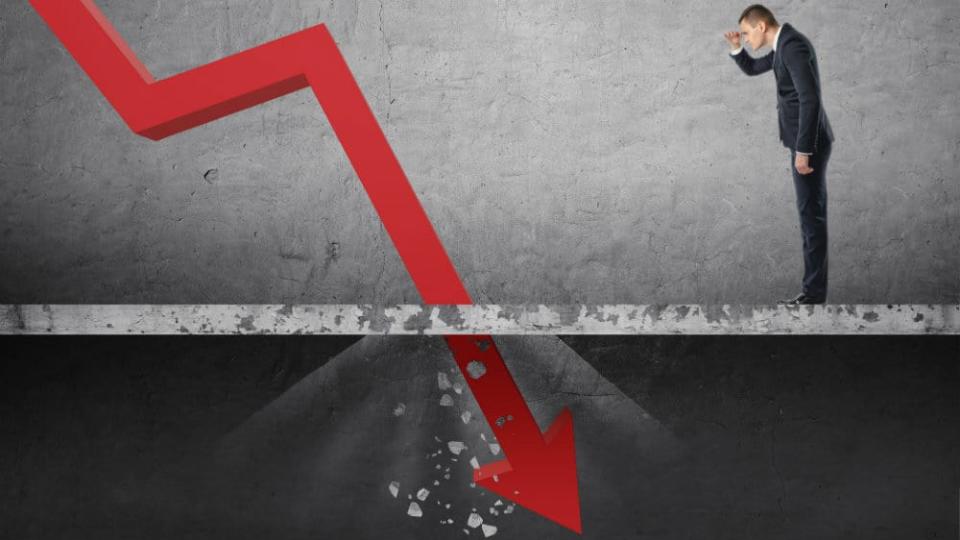Are the Big Banks in Danger?

It’s no secret that Canada’s economy is awash in debt. Debt levels for corporations and households have hit a record high, with families and business owners pushed to their financial limits. With borrowers in a precarious position, lenders – especially big banks – may want to reassess their risks.
A study by the Bank for International Settlements (BIS), found that Canada was one of the top three countries at the highest risk of a near-term banking crisis. The institute serves as the global central bank and keeps an eye on factors such as household debt-to-national income (GDP) ratios. Canada’s household debt-to-national income ratio rose to 101% this year.
That puts the country’s largest banks at risk if Canadians lose their jobs or start defaulting on their debt. Of the top five big banks in the country, the Bank of Nova Scotia (TSX:BNS)(NYSE:BNS) may be the most vulnerable.
Scotiabank’s magnified vulnerabilities
Fellow Fool Matt Smith eloquently summarized why Scotiabank was one of the most vulnerable banks in the country. Not only is the bank one of the largest lenders in Canada, but its recent expansion into Latin America has compounded its troubles.
Scotiabank is one of the top ten lenders in Colombia, Peru, and Chile, where recent political and economic problems have flared up. Latin American currencies have been some of the worst performing currencies in the world this year. That weakness will certainly be reflected on Scotiabank’s balance sheet.
Meanwhile, back home, the company’s core business is lending to households. The bank holds a $205 billion-mortgage portfolio, making it one of the largest lenders in the space. Any sudden spike in unemployment or interest rates could dent this portfolio and Scotiabank’s prospects.
To be sure, the bank claims these assets are “stress-tested” on a regular basis and there’s enough of a buffer to protect them if the economic cycle turns. However, only time will tell if this buffer is adequate. Meanwhile, I would rather focus on banks in a relatively stronger position – like Toronto-Dominion Bank (TSX:TD)(NYSE:TD).
TD may be the safest
Even in the worst markets, there’s always an exception. TD is starting to look like that expectation to an increasingly worrying banking industry. Its saving grace is its exposure to the world’s most robust economy – the United States.
If you combine U.S. retail banking and TD Ameritrade, 34% of the bank’s earnings in the third quarter of this year were derived from U.S. operations. Since the global financial crisis of 2008, the American economy has grown healthier, with debt ratios and house prices at reasonable levels. This reduces the risk of TD’s balance sheet.
Meanwhile, the recent acquisition of TD Ameritrade by brokerage giant Charles Schwab will add billions to TD’s considerable cash hoard. The bank already has $393 billion in cash and cash equivalents that should serve as a buffer in the event of a Canadian banking crisis.
TD stock offers a 3.9% dividend yield and trades at a mere 1.7 times book value per share and 11 times earnings per share. In other words, it’s a robust bank with a reasonable valuation that cautious investors should take a closer look at.
Bottom line
Canada could be at risk of a banking crisis. Scotiabank may be the most vulnerable, while TD seems well-positioned to weather the storm.
More reading
Retirees: Here's 1 Awesome Trick to Max Out Your CPP Pension
Canada Revenue Agency: 3 TFSA Statistics That Will Shock You
Canada Revenue Agency: Here’s How Much You’re Paying Into CPP
Fool contributor Vishesh Raisinghani has no position in any of the stocks mentioned. The Motley Fool recommends BANK OF NOVA SCOTIA.
The Motley Fool’s purpose is to help the world invest, better. Click here now for your free subscription to Take Stock, The Motley Fool Canada’s free investing newsletter. Packed with stock ideas and investing advice, it is essential reading for anyone looking to build and grow their wealth in the years ahead. Motley Fool Canada 2019

 Yahoo Finance
Yahoo Finance 